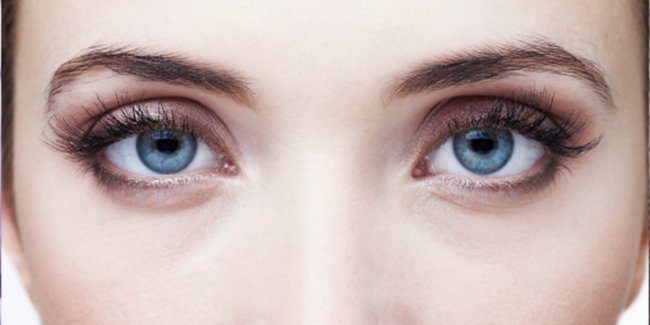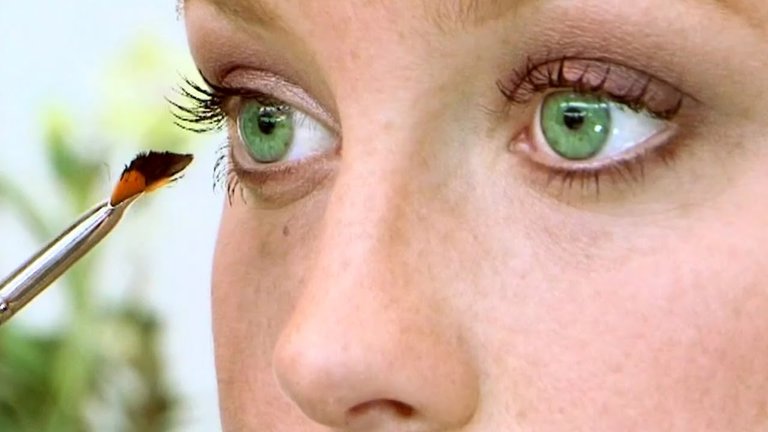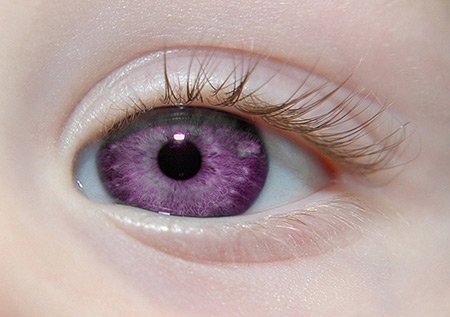Blue Eyes
Blue-eyed people have no or little melanin on the front layer of the iris, so as light goes through the eye, it hits the back of the iris and then reflects out. As it goes through the stroma, the presence of proteins causes blue light to scatter, which makes the eye look blue.
This phenomenon (the scattering of light by particles much smaller than the wavelength of radiation) is called Rayleigh scattering, and it's the same reason the sky appears to be blue.

Gray Eyes
Unfortunately, we don’t really know why people have gray eyes. There are, however, some theories on where gray eyes come from:
Gray-eyed people could have an even smaller amount of melanin in their eyes than blue-eyed people.
They could have a different composition of the stroma that causes the light to scatter differently.

Brown Eyes
Brown-eyed people have melanin in both parts of their irises, so the effect of the light-scattering cannot be seen. The eyes appear darker because more light is absorbed, and variations in color and shade of brown come from the amount of melanin present.

Green Eyes
The front iris layer of green-eyed individuals has only a small amounts of melanin which tends to be the red or yellowish pheomelanin. Since the melanin concentration is very low, the light scattering effect gives off a blue color, which mixes with the yellowish color of the pheomelanin, making the eye look green.

Amber Eyes
Amber eyes get their color from the increased presence of lipochrome (pheomelanin) in the iris.

Red or Violet Eyes
People with albinism are often considered to have violet or red eyes. However, the truth is a little more complicated. Albinism is a condition that causes people to have a lack of pigment in their hair, skin, and eyes. Since people with albinism lack pigment in their iris, light can bounce off the back of the eye and exit the eye.
The light usually reflects back red because of the blood vessels at the back of the retina. Eyes can look violet when this red color combines with the bluish color of the iris that results from a lack of melanin, and the aforementioned light-scattering effects.
In fact, the reason the eyes look red is the same reason you might have red-eye in a photograph, which results from light reflecting off the back of the eye and passing back out through the iris. In normal eyes and lighting conditions, light cannot exit the eye like this.


Warning! This user is on my black list, likely as a known plagiarist, spammer or ID thief. Please be cautious with this post!
To get off this list, please chat with us in the #steemitabuse-appeals channel in steemit.chat.